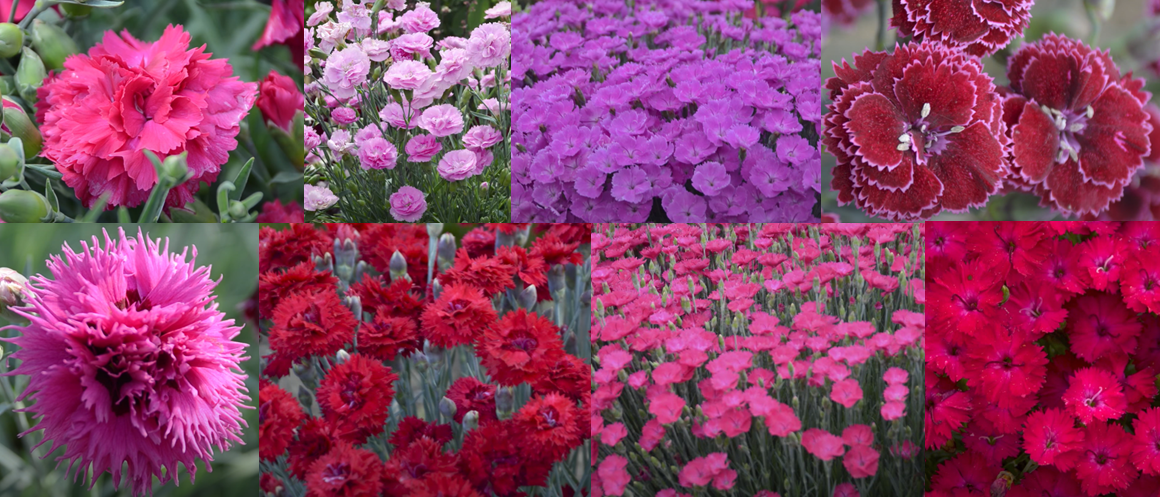Dianthusis a popular genus of about 340 species of flowering plants in the family Caryophyllaceae. Native mainly to Europe and Asia, with a few species in north Africa and southern Africa, and one species in arctic North America. Common names include carnation, pink and sweet william.
A perennial garden staple for centuries, its hybrids now number literally in the tens of thousands. These beauties are prerequisites in the classic English cottage garden and at home wherever there is full sun and well-drained soil with adequate moisture.
Dianthus has annual, perennial, and biennial species. Dianthus referred to as “Pinks” or “Cheddar pinks” are perennial forms. They are evergreen or semi-evergreen. The common name “pink” is derived from the frilly edges of the petals, which look like they were cut with pinking shears.
A clove-like fragrant addition to any garden, Dianthus are available in a wide range of colors, including red, pink, white, yellow, and purple, as well as bicolor. Long-lasting flowers are typically star-shaped with single, semi-double or double with frilly petals. Blooming in spring to early summer; some rebloom intermittently or continuously through summer and fall. Deadheading or removing spent flowers encourages new flower blooms. Dianthus plants are also a popular choice for cut flowers.
Evergreen pinks retain shape and color even under snow, a trait that makes them an ideal border plant in cooler areas and a staple in rock gardens. Dianthus’ grass-like foliage shades vary from green, blue-green, or silver-green.
Relatively easy to care for and Dianthus can be grown in a variety of conditions. Cheddar pinks prefer full sun, and slightly alkaline, sandy, well-drained soil with sharp drainage. Poor drainage can result in stem or root rot. Plant Dianthus in borders, rock gardens, or containers.
The best planting times for “pinks” are early spring or fall. Place plants 6 to 12 inches apart, depending on the variety. Loosen soil to a depth of 12 inches with a good mix of 2 to 4 inches of compost. Dig a hole twice the diameter of the root ball and place the plant in the hole so the top of the root ball is level with the soil. Gently tamp soil around the base of the plant and water well.
For established perennials, apply a thin layer of compost (not too close to plant’s base) in spring and with a well-balanced fertilizer. Too much, too close organic mulch can contribute to stem rot or fungal problems. Straw, gravel, or stone chips are excellent selections to suppress weeds.
Fairly drought tolerant once established, occasional deep watering may be beneficial in hot weather. Frequent overwatering or heavy mulch can cause crown rot.
Older plants may develop dead spots in the center of the foliage, which means it is time to divide. Cut clumps into several pieces, removing the dead foliage, and transplant divisions to new spots.
In addition to being easy to care for, dianthus are free of most pests and diseases when healthy and planted in the ideal site. Insect problems may include slugs and snails, sow bugs, spider mites, or grasshoppers.




